IoT and Big Data Integration: A Practical Roadmap for Business Leaders
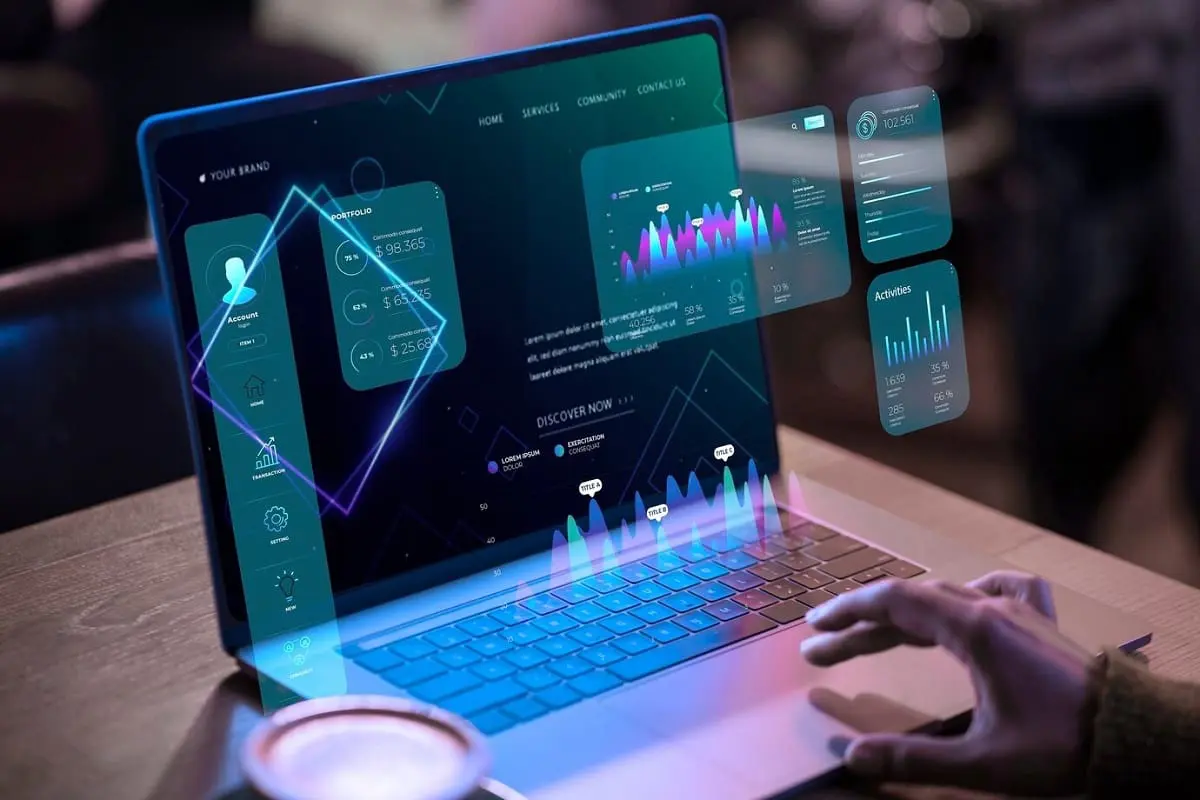
This guide explains how these technologies work together in practice. You’ll discover proven Big Data IoT use cases across industries, implementation best practices, and the core advantages your organization can unlock. These insights are drawn directly from our experience at Relevant Software in IoT software development services.
Understanding IoT (Internet of Things)
Every business looking to leverage Big Data must first understand where that data originates. In many cases, it starts with IoT—networks of smart, connected devices designed to monitor, measure, and inform.
What is IoT?
The Internet of Things (IoT) refers to a distributed system of physical objects—machines, sensors, infrastructure, and everyday items—that collect, transmit, and react to data without direct human control. These devices extend network intelligence into the physical world.
Unlike traditional systems, IoT does not depend on periodic input. Instead, it allows machines and environments to operate with a constant feedback loop. Devices capture physical variables—motion, humidity, pressure, voltage—and send that data to gateways or cloud servers for interpretation or action.
A functional IoT system relies on four key pillars:
- Sensors and actuators: These components measure or influence real-world conditions (e.g., temperature, pressure, vibration, or chemical presence).
- Edge devices or gateways: Local hardware units that aggregate data, apply initial filtering or transformation, and push relevant packets forward.
- Connectivity layer: These are communication networks that link edge devices to central infrastructure. These may include Wi-Fi, 5G, NB-IoT, LoRaWAN, or Ethernet, depending on range, power, and throughput needs.
- Data infrastructure: Backend platforms or cloud environments that receive data streams, run analytics, integrate with business systems, and provide real-time or historical visibility.
IoT frameworks function across structured environments such as factories and unpredictable settings such as urban infrastructure. The IoT strategic advantage lies in passive, real-time sensing—machines that detect and report conditions without manual checks or data entry.
Explore more in our article about what is IoT, and the value it brings to your business.
How IoT works
IoT systems operate through a multi-stage data pipeline that mirrors many industrial control architectures but adds distributed intelligence and external accessibility.
The flow begins with data capture. Devices embedded in assets or environments measure key variables—air quality in a city block, output levels on a factory line, or occupancy in a conference room. This data often passes through an edge gateway, which performs compression, filtering, or protocol translation before pushing data to the cloud.
Once in the cloud, IoT platforms run logic rules, perform anomaly detection, or apply predictive models. These platforms interface with enterprise applications—ERP systems, building management software, or energy platforms—to initiate next steps.
These might include:
- Sending a maintenance alert based on equipment vibration thresholds
- Triggering an automatic adjustment in temperature to reduce energy use
- Logging usage trends for future resource allocation
For example:
- Smartphones capture accelerometer, GPS, and user input data that supportnavigation, health tracking, and mobile payments.
- Wearables like fitness trackers measure heart rate, oxygen levels, and sleep patterns—often sending this data to healthcare systems or wellness platforms.
- Connected appliances in industrial settings track equipment temperature, voltage levels, and cycle counts to avoid overuse and schedule maintenance.
This cycle of real-time input and closed-loop control enables enterprises to respond faster, allocate resources with precision, and eliminate information latency between the physical world and digital operations.
Applications of IoT
IoT now shapes strategy across multiple domains. Below are the four most advanced verticals using IoT at scale:
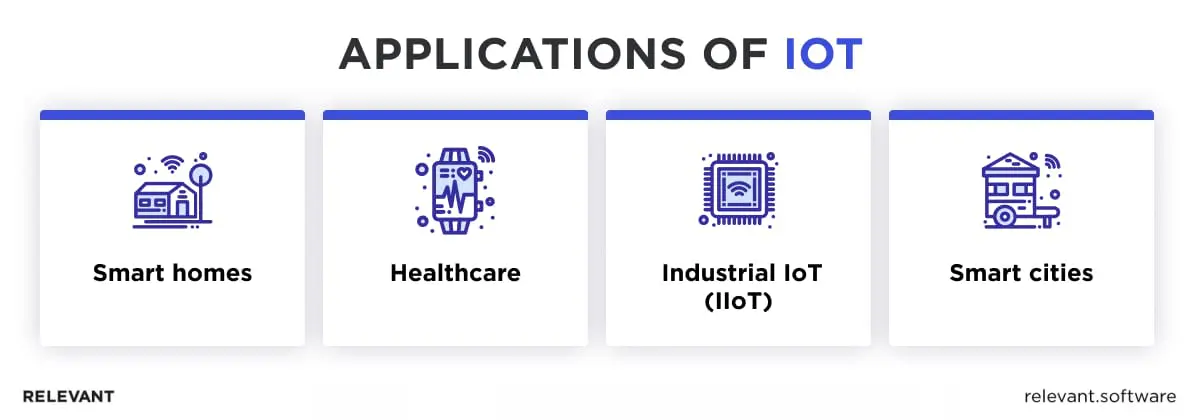
Smart homes
Residential IoT goes beyond convenience. Intelligent HVAC systems regulate temperature based on occupancy. Smart lighting reduces power draw by sensing room use and daylight. Security devices, such as motion detectors and smart locks, create responsive protection layers. Voice assistants act as command hubs that control multiple devices under one logic layer.
Healthcare
Hospitals and clinics deploy IoT for patient monitoring, inventory tracking, and diagnostics. Wearable devices feed patient vitals into EMRs in real time, allowing for remote supervision of chronic conditions. Asset tags on critical equipment (infusion pumps, defibrillators, ventilators) reduce time spent searching, cut theft risk, and improve service readiness.
Industrial IoT (IIoT)
Manufacturing leads global IoT adoption, with a variety of industrial IoT applications transforming production efficiency. Factories use IoT sensors for condition-based monitoring to prevent downtime, ensure environmental safety, and proactively detect quality issues. IIoT networks continuously feed data into MES, SCADA, or ERP systems, providing full plant visibility and enabling automated response protocols.
Smart cities
Municipalities deploy sensors across utilities, transport, waste systems, and public safety assets. Smart streetlights adjust brightness based on movement and daylight. Air quality monitors inform traffic patterns. Water meters detect leaks automatically. These smart city analytics systems contribute to carbon reduction goals, increase citizen satisfaction, and improve planning through long-range data analysis.
The role of Big Data in IoT
IoT devices generate massive volumes of data, but without Big Data systems, that information has limited value. Big Data tools provide the resources to store, process, and extract valuable insights at scale, turning raw input into strategic intelligence.
What is Big Data?
Big Data refers to extremely large and complex data sets that exceed the capabilities of traditional data processing tools. Big data technologies are not just about scale—they involve a specific set of characteristics that define how the data behaves and why it matters.
The four core traits of Big Data include:
- Volume – massive quantities of data created from countless sources, often in terabytes or petabytes
- Velocity – rapid speed of data generation and transfer, particularly from real-time systems
- Variety – multiple data types including structured (databases), semi-structured (logs, JSON), and unstructured (images, video, voice)
- Veracity – uncertainty in data accuracy due to inconsistency, noise, or duplication
Big Data emerges from both human and machine activity. Website interactions, social media posts, financial transactions, and mobile usage contribute significantly. However, in the IoT context, devices amplify this flow exponentially by streaming signals continuously.
As sensors scale and networks expand, the size and complexity of the data ecosystem outpace manual oversight or traditional BI tools. To extract value, organizations must apply advanced analytics, cloud platforms, and real-time pipelines that can filter, correlate, and interpret Big Data as it arrives.
How IoT generates big data
IoT infrastructure acts as a relentless data generator. Each connected device produces a constant flow of time-sensitive information that builds into a high-velocity data stream.
Common data types include:
- sensor readings – temperature, vibration, pressure, humidity, air quality, etc.
- geolocation data – GPS coordinates from vehicles, mobile devices, or tagged assets
- event logs – device status, system health, firmware activity, error codes
- usage patterns – machine operation cycles, customer behavior, energy consumption
Consider a modern wind turbine. Each unit can include over 100 sensors that stream operational data every few milliseconds. Multiply that across hundreds of turbines, and you create gigabytes of data per hour—data that requires immediate context to avoid asset failure or lost output.
This scale and frequency define why big data and the internet of things remain tightly linked. Devices alone cannot provide insight; they need connected devices management platforms that can receive, organize, and analyze information without delay or degradation.
Data processing and analysis
IoT-generated Big Data presents unique challenges. The volume alone demands scalable infrastructure. But beyond storage, organizations must address how to prioritize, clean, and process data before insight becomes outdated.
Two main approaches address the demands of this data:
- Real-time processing – enables systems to act instantly, often using in-memory computing or stream processing frameworks. Use cases include anomaly detection, fraud alerts, and asset performance monitoring.
- Batch processing – analyzes data in scheduled blocks. This method supports historical trend analysis, forecasting, and reporting.
Storage also requires flexibility. Traditional databases struggle with scale and speed. In response, organizations use:
- Cloud computing – to elastically scale storage and compute resources across global regions. Platforms like AWS IoT, Azure IoT Hub, and Google Cloud IoT Core support this layer.
- Edge computing IoT – to reduce latency and data transfer costs by processing data closer to the source. Gateways or on-device processors filter and analyze critical data before it reaches the cloud.
An effective IoT-Big Data architecture balances edge and cloud processing: time-sensitive data stays local, while larger volumes flow upstream for deeper analytics. Without this structure, systems fall behind, and insights arrive too late to act.
How IoT and Big Data work together
The Internet of Things and Big Data don’t simply coexist—they complement each other. IoT creates vast volumes of real-time data from connected devices, while Big Data provides the computational power and intelligence to make that data usable. The real value emerges when both are aligned across systems, infrastructure, and decision-making processes.
Data collection and integration
IoT devices continuously collect real-time data from physical environments—temperature, location, movement, usage, pressure, and dozens of other variables. This data flows through embedded sensors and gateways into the cloud, where it becomes part of a larger digital stream.
Once there, integration with Big Data platforms becomes essential. These platforms receive, organize, and unify raw input from thousands or millions of devices. Structured and unstructured data are sorted, tagged, and stored for immediate or future analysis. Without this layer of scalable integration, even the most advanced IoT infrastructure fails to deliver insight.
Data analytics in IoT
Capturing data is not enough—value comes from what you extract. Big Data analytics sits at the center of IoT intelligence, enabling real-time pattern detection, trend analysis, and forecasting.
For example:
- Predictive maintenance tools identify early signs of failure in industrial equipment before breakdowns occur.
- Anomaly detection alerts teams when energy usage or temperature patterns deviate from safe thresholds.
- Demand forecasting algorithms in supply chain and retail systems use Internet of Things data analytics to anticipate changes in consumer behavior or inventory requirements.
According to the experience of Relevant Software’s clients, the integration of IoT Big Data analytics reduces risk exposure, strengthens operational control, and significantly improves forecasting accuracy across critical workflows.
Impact on decision making
The integration of IoT and Big Data directly supports both operational and strategic decision-making. In logistics, real-time location data informs routing decisions. In healthcare, wearable devices alert healthcare providers and medical teams to early warning signs. In smart cities, traffic sensors inform dynamic signal adjustments to reduce congestion.
What once took days of manual analysis now happens instantly—at the edge or in centralized platforms. Leaders no longer need to react after the fact. They act in real time, backed by a continuous stream of relevant data.
Case in point:
- Barcelona reduced water and energy usage in public parks by using IoT sensors and analytics to optimize irrigation based on weather and soil data.
- Mount Sinai Hospital in New York uses IoT-connected wearables and Big Data analysis to monitor patient vitals, predict deterioration, and intervene faster.
These outcomes aren’t experimental—they’re operational. And they show what becomes possible when connectivity meets computation at scale.
See how to use the potential of AI and IoT and create smarter systems.
Benefits of combining IoT and Big Data
How are Big Data and the Internet of Things connected? When integrated strategically, IoT and Big Data deliver more than just visibility—they create a real-time feedback loop that transforms how organizations operate. Relevant Software experts have seen this synergy unlock measurable business value across industries.
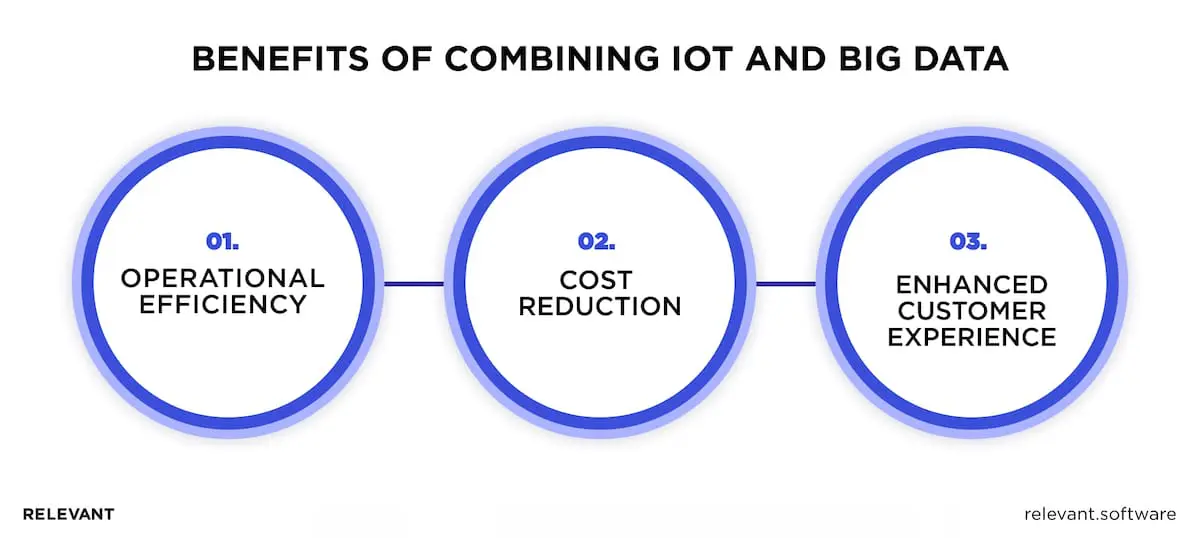
Operational efficiency
One of the most immediate gains from Big Data and IoT integration is process optimization in production lines. Sensors on factory floors, delivery trucks, or warehouse shelves feed continuous streams of operational data. Big Data systems analyze that input to detect inefficiencies, eliminate bottlenecks, and fine-tune system performance.
- In manufacturing, connected machines signal wear before failure. Analytics platforms adjust production schedules and reduce idle time.
- In logistics, GPS and temperature sensors track fleet performance. Data insights optimize routes, reduce delays, and prevent spoilage.
- In supply chain management, real-time data from vendors, inventories, and demand forecasts keeps orders aligned with actual need.
These systems don’t just report what’s happening—they identify what should happen next.
Cost reduction
Automated data collection and advanced analytics reduce the need for manual monitoring, guesswork, and reactive fixes. Over time, this translates into significant savings.
- IoT predictive maintenance cuts unplanned downtime and lowers repair costs.
- Automation of routine tasks—such as restocking, energy adjustments, or security checks—reduces labor and resource waste.
- Asset optimization ensures equipment and infrastructure deliver maximum return before replacement.
Businesses that combine IoT Big Data gain the ability to act earlier, operate leaner, and avoid costly disruptions in IoT product development.
Enhanced customer experience
Real-time usage data, feedback loops, and behavior tracking help businesses deliver products and services that adapt to each user. This personal touch now scales—thanks to the combination of connected devices and intelligent analytics.
- Smart home devices learn user preferences and adjust automatically.
- Telecom providers use real-time network data to personalize offers based on location and usage patterns.
- Retailers deliver custom promotions, streamline checkouts, and optimize in-store layouts by tracking shopper behavior in real time.
Behind these outcomes is a shared engine: sensor data processed at speed and translated into timely, customer-facing actions.
Steps to integrate IoT and Big Data
From proof of concept to enterprise deployment, integration demands technical depth and strategic clarity. At Relevant Software, our team helps businesses align IoT infrastructure with Big Data ecosystems—ensuring each layer supports scale, speed, and real outcomes. Below are the IoT Integration best practices we follow to build systems that work reliably from day one.
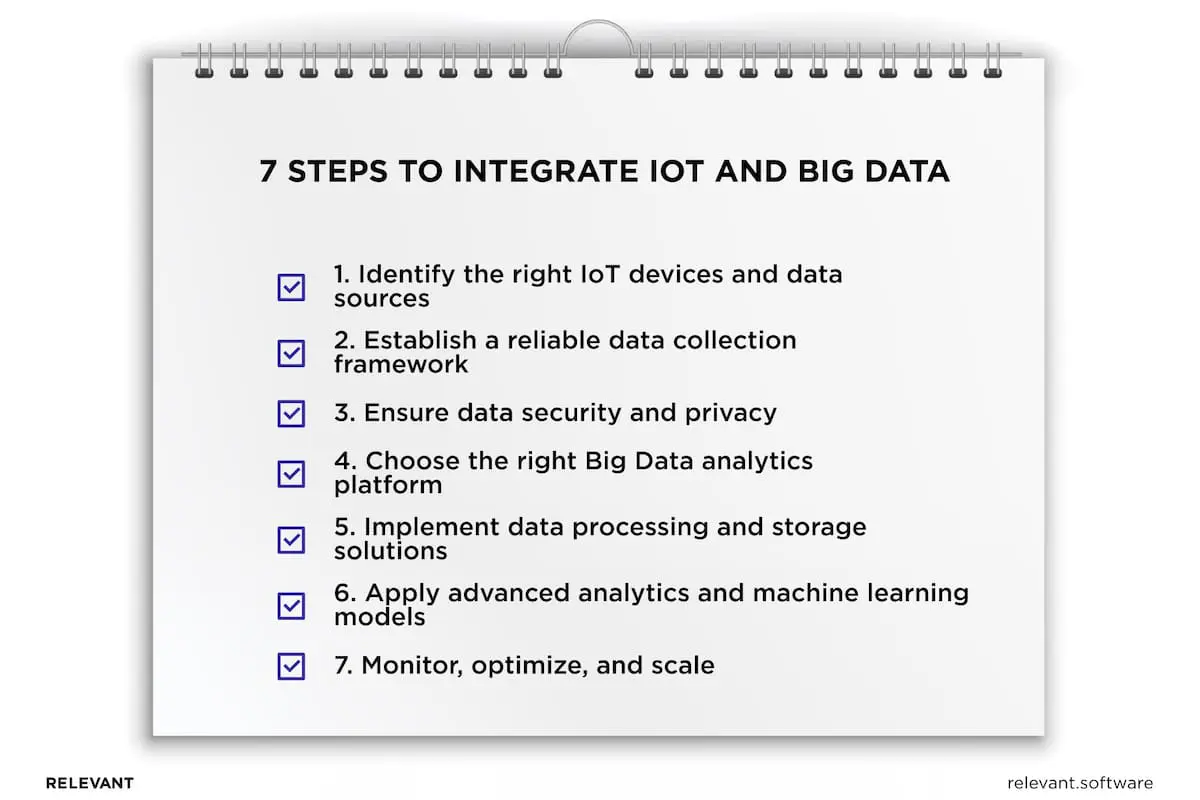
Step 1 – Identify the right IoT devices and data sources
Start by defining the business objective. Then determine which IoT devices provide relevant input—motion sensors, GPS trackers, temperature monitors, wearables, or smart meters. Analyze the type of data each device produces and assess its strategic value. This step prevents data overload and ensures your team captures only what supports business decisions.
Step 2 – Establish a reliable data collection framework
Set up infrastructure that collects data at scale without compromising performance. We often configure hybrid systems using edge gateways, cloud connectors, and secure APIs. Our engineers ensure every device communicates in real time and funnels structured data into centralized systems—ready for analytics without delays or loss.
Step 3 – Ensure data security and privacy
IoT data security is critical at every stage—device, transmission, and storage. Data must move securely from the source device to its final destination. We apply enterprise-grade encryption, role-based access controls, and identity management protocols. Our solutions comply with regulations such as GDPR and CCPA, especially when systems capture location, health, or behavioral data from end users.
Step 4 – Choose the right Big Data analytics platform
Your platform should align with volume, velocity, and variety. For Relevant Software clients processing large datasets, we configure cloud-native solutions like AWS, Azure, or Google BigQuery. When immediate insight is a priority, we deploy platforms like Apache Spark or Flink that support real-time, distributed analysis of IoT data.
Step 5 – Implement data processing and storage solutions
Choose edge or cloud architecture based on latency tolerance. In high-speed environments, we use edge devices to run local models and flag anomalies on-site. For historical insights or trend analysis, we deploy long-term storage solutions—data lakes, cloud warehouses, or hybrid systems with dynamic scale.
Step 6 – Apply advanced analytics and machine learning models
Once systems collect and process data efficiently, we build custom analytics workflows. This includes predictive maintenance for industrial assets, demand forecasting for logistics, and anomaly detection for smart environments. Our data science team designs models tailored to real operational use, not theoretical accuracy.
Step 7 – Monitor, optimize, and scale
We implement observability tools to track uptime, latency, and data quality across the system. Our DevOps engineers refine pipelines, tune models, and upgrade infrastructure based on real usage patterns. Every Relevant Software deployment supports seamless scale, from pilot projects to full enterprise rollouts.
Our IoT success stories
When infrastructure spans thousands of devices, reliability and clarity matter. Relevant Software’s team of seasoned product developers and industry analysts has designed and delivered IoT platforms that perform in the field, not just in theory. Here are a few of our most effective rollouts.
Airthings: Custom dashboard for real-time environmental intelligence
Airthings selected Relevant to develop a responsive, data-rich dashboard for their expansive air quality network. Using React for an engaging front end, Express.js for optimized server operations, and AWS to handle growing infrastructure needs, the solution now delivers live insights to users across thousands of buildings—without performance compromise.
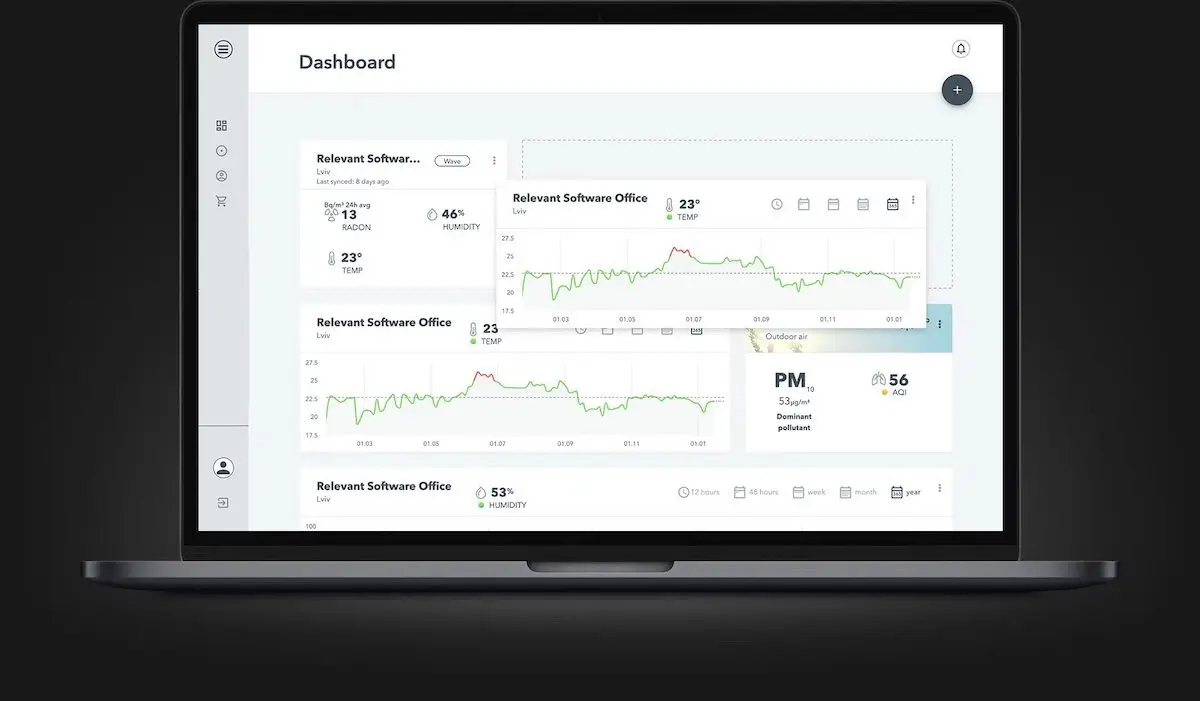
Enterprise IoT: Scalable platform for remote device monitoring
For a global enterprise, we engineered a secure platform that simplifies remote monitoring of IoT hardware. The system offers real-time tracking of device health (CPU, memory, motor status), supports automated software rollouts, and enables direct console sessions for remote diagnostics—eliminating the need for on-site intervention.
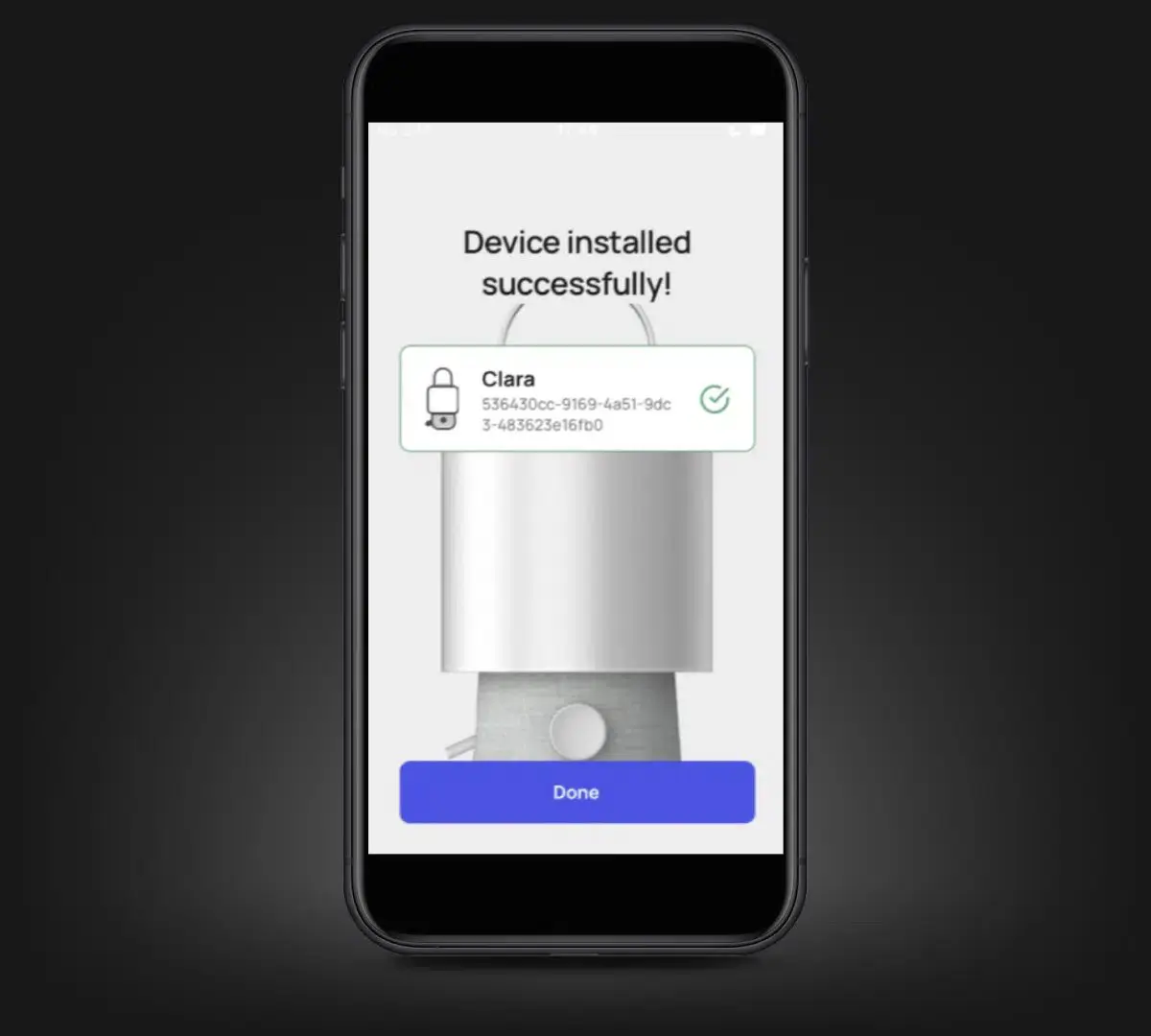
Sensor Innovation: Intelligent management system for connected sensors
Sensor Innovation turned to Relevant Software to modernize its outdated sensor interface. We introduced an advanced dashboard with live building maps, precision device controls, and improved backend responsiveness—empowering users to manage thousands of sensors with accuracy and ease.

Integrate IoT and Big Data with Relevant Software
At Relevant Software, we help businesses turn connected devices into intelligent systems—where data flows securely, insights arrive in real time, and infrastructure adapts as you grow.
Whether you’re optimizing factory operations, tracking assets across supply chains, or building smart environments, we bring the technical depth and strategic focus to make IoT and Big Data work together—without unnecessary complexity or vendor lock-in.
Our team delivers:
- Architecture that connects devices, edge systems, and the cloud
- Data pipelines that scale with volume, velocity, and variety
- Predictive models that reduce downtime, forecast demand, and surface anomalies
- Enterprise-grade security, built for compliance and resilience
- Flexible, modular systems ready to evolve with your roadmap
If you’re ready to move from fragmented systems to intelligent, scalable infrastructure, we’re ready to help you build it. Hire Big Data engineers who turn complexity into clarity—and platforms into growth engines. Let’s talk.



